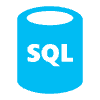Freelance Data Analysts: Mini-Projects That Test Their Real Skills

Freelance Data Analysts: Mini-Projects That Test Their Real Skills
Why Mini-Projects Are Powerful for Freelancers
List of Mini-Projects to Validate Real Skills
1. Scrape Web Data
2. Clean Data Sets
3. Explore Large Data
4. Build Predictive Models
5. Create Interactive Dashboards
Steps to Present These Projects
Brief Project Description
Steps Taken
Results and Insights
Key Reflections
FAQs About Freelance Data Analysts
When should I propose mini-project tests to a client?
How long is a typical mini-project for freelancing?
What if a client wants me to use unfamiliar tools?
Do I need legal agreements for short data projects?
Where to Go From Here
Freelance Data Analysts: Mini-Projects That Test Their Real Skills
Why Mini-Projects Are Powerful for Freelancers
List of Mini-Projects to Validate Real Skills
1. Scrape Web Data
BeautifulSoup or requests shows an understanding of HTML structure and response handling."Scraping a sneaker release calendar taught me more about pagination than any course ever did."
Selenium for JavaScript-heavy pages. Results are saved in CSV or JSON format for further analysis. Rate limiting, headers, and robots.txt are non-optional—clients often ask about them.2. Clean Data Sets
MM/DD/YYYY vs YYYY-MM-DD).days_since_last_purchase) demonstrates attention to detail.3. Explore Large Data
4. Build Predictive Models
"I once built a model that predicted late pizza deliveries. It worked, but only until the weather changed."
5. Create Interactive Dashboards
Steps to Present These Projects
Brief Project Description
“This project analyzes three months of e-commerce transaction data to identify purchasing patterns across customer segments. Data was sourced from a public Kaggle dataset and modeled to simulate a mid-sized online retailer.”
Steps Taken
“Always explain what got dropped, filled, or restructured. Silence on data quality raises more questions than answers.”
Results and Insights
Key Reflections
“This dashboard ended up being too dense. Next time I’d limit it to five widgets and add tooltips instead of extra charts.”
FAQs About Freelance Data Analysts
When should I propose mini-project tests to a client?
“I’ve done SQL audits that took two hours and won me six-month contracts. Small doesn’t mean insignificant.”
How long is a typical mini-project for freelancing?
What if a client wants me to use unfamiliar tools?
“I once spent two hours debugging a dashboard in a tool I’d never used. The client later admitted they didn’t know how the tool worked either.”
Do I need legal agreements for short data projects?
Where to Go From Here
Posted Apr 20, 2025
Freelance data analysts can showcase real skills with mini-projects that highlight data cleaning, modeling, dashboards, and real-world problem solving.











